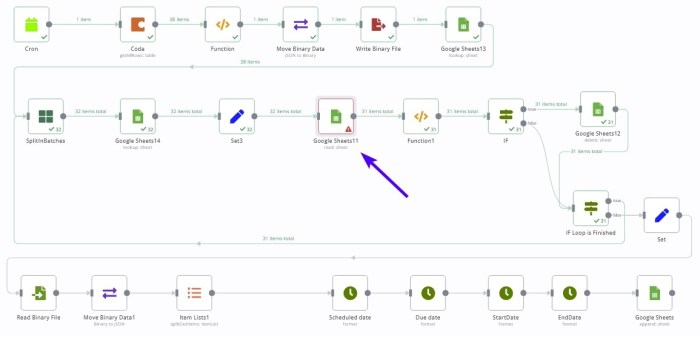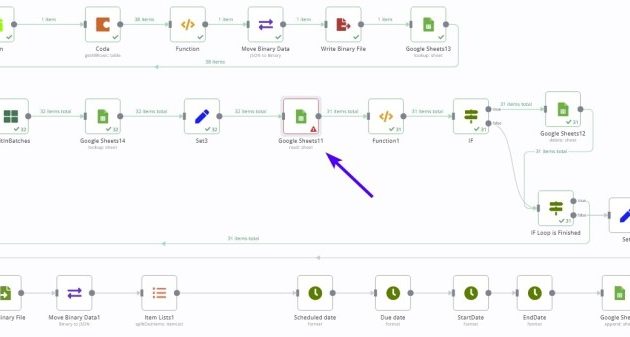Watering a Money Tree Plant

Care for a money tree plant – The lifeblood of your Money Tree, its vibrant green leaves whispering tales of prosperity, hinges on a delicate balance – the art of proper watering. Understanding this balance unlocks the key to a thriving, healthy plant, a silent guardian of your financial well-being. Too much, and you risk drowning its roots; too little, and you watch its leaves droop in despair.
Let’s unravel the secrets to achieving this perfect equilibrium.
Optimal Watering Frequency
The ideal watering schedule for your Money Tree isn’t a fixed formula, but rather a dance between season, pot size, and environment. During the warmer months (spring and summer), when growth is vigorous and evaporation is rapid, your Money Tree will thirst more frequently. Conversely, in autumn and winter, when growth slows, the watering frequency should decrease significantly. Larger pots retain moisture longer than smaller ones, demanding less frequent watering.
A well-draining pot is crucial; stagnant water is the enemy.
Signs of Underwatered and Overwatered Money Trees
A thirsty Money Tree will display its distress through visibly drooping leaves, often accompanied by dry, brittle soil. The leaves might feel limp and lack their usual vibrant green hue. In contrast, an overwatered Money Tree exhibits yellowing leaves, possibly accompanied by leaf drop. The soil will feel perpetually soggy, and a foul odor might emanate from the pot, indicating root rot, a potentially fatal condition.
Proper Watering Techniques
Before watering, always check the soil moisture. Stick your finger about two inches into the soil. If the soil feels dry to the touch, it’s time to water. For a more thorough assessment, you can use a moisture meter, readily available at most garden centers. When watering, apply water slowly and thoroughly until it drains out of the drainage holes at the bottom of the pot.
Avoid letting the plant sit in standing water; this encourages root rot. Allow the soil to dry out slightly between waterings. This promotes healthy root growth and prevents the build-up of harmful salts in the soil.
Watering Needs Based on Plant Size and Environment
| Pot Size | Sunny Environment | Shady Environment | Season |
|---|---|---|---|
| Small (under 6 inches) | Every 2-3 days (Summer), Every 7-10 days (Winter) | Every 3-5 days (Summer), Every 10-14 days (Winter) | Summer/Winter |
| Medium (6-12 inches) | Every 3-5 days (Summer), Every 10-14 days (Winter) | Every 4-7 days (Summer), Every 14-21 days (Winter) | Summer/Winter |
| Large (over 12 inches) | Every 5-7 days (Summer), Every 14-21 days (Winter) | Every 7-10 days (Summer), Every 21+ days (Winter) | Summer/Winter |
Light Requirements for Money Trees

The radiant energy of sunlight is the lifeblood of your money tree, fueling its growth and vibrant green foliage. Understanding its light needs is key to unlocking its full potential, transforming your plant from a simple houseguest into a thriving, verdant companion. Just as we humans need the right balance of sun exposure, so too does this fascinating plant.Sunlight’s gentle touch, neither too harsh nor too faint, fosters a money tree’s robust health.
The intensity and duration of light directly impact the plant’s development, influencing leaf color, growth rate, and overall vitality. A carefully chosen location, attuned to your home’s natural light patterns, will nurture your money tree’s journey to flourishing maturity.
Ideal Light Conditions for Money Tree Growth
Money trees thrive in bright, indirect sunlight. Direct sunlight, especially during the hottest parts of the day, can scorch their leaves, leaving them with unsightly brown patches and hindering their growth. Indirect light, however, allows them to photosynthesize effectively without the risk of sun damage. Aim for a location where your money tree receives several hours of bright, filtered sunlight each day.
Think of the soft, dappled light that filters through a sheer curtain or the gentle glow of a north-facing window. A well-lit spot away from harsh, direct rays is the ideal environment for this adaptable plant.
Effects of Insufficient and Excessive Light
Insufficient light leads to leggy growth in money trees, where the stems become elongated and weak in their attempt to reach a light source. The leaves may appear pale and smaller than usual, a clear sign that your plant is yearning for more illumination. Conversely, excessive light exposure results in leaf burn, characterized by brown, crispy patches on the foliage.
The leaves might also curl or wilt, showing clear signs of distress from the intensity of the sunlight. A carefully observed balance is essential to maintain a healthy and vibrant plant.
Choosing the Best Location for a Money Tree
Selecting the perfect location in your home involves careful consideration of your available sunlight. East- or west-facing windows offer a good compromise, providing ample bright, indirect light without the harsh intensity of a south-facing window. North-facing windows, while providing less intense light, can still be suitable if supplemented with artificial light, especially during shorter winter days. Avoid placing your money tree near heating or cooling vents, which can cause drastic temperature fluctuations and desiccate the leaves.
Optimal Placement of a Money Tree
Imagine a sunny corner of your living room. A bright, east-facing window bathes the area in morning light. Your money tree sits several feet away from the window, protected by a sheer curtain that diffuses the direct sunlight. This prevents harsh rays from damaging its delicate leaves while still providing ample light for healthy growth. This text-based visualization depicts a well-lit, yet protected location, ensuring the money tree receives the ideal amount of light without any direct exposure to intense sunlight.
The plant sits slightly away from the window, on a table or stand, creating a balanced and aesthetically pleasing arrangement within the room.
Common Money Tree Problems and Solutions
The journey of nurturing a money tree, like any other living being, isn’t always smooth sailing. Occasionally, these resilient plants encounter challenges that require our understanding and intervention. Recognizing the signs of distress and knowing how to address them is key to maintaining the vibrant health and longevity of your money tree. By understanding the common issues, you can proactively prevent problems and ensure your money tree thrives.
Money tree problems often manifest as changes in leaf appearance or overall plant health. These changes can stem from various factors, including improper watering, inadequate light, pest infestations, or diseases. Early detection and appropriate action are crucial for successful treatment.
Common Money Tree Pests and Diseases
Several pests and diseases can affect money trees, weakening their vitality and potentially causing significant damage. Prompt identification and treatment are crucial to prevent further spread and protect the plant’s overall health. Understanding the common culprits empowers you to safeguard your money tree.
Among the most prevalent pests are spider mites, mealybugs, and scale insects. Spider mites, tiny arachnids, create fine webbing on leaves and cause stippling or yellowing. Mealybugs are small, white, cottony insects that cluster on stems and leaves, sucking plant sap. Scale insects appear as small, hard bumps on stems and leaves, also sucking plant sap. Diseases, while less common, can include root rot, often caused by overwatering, leading to wilting and leaf drop.
Fungal infections can also manifest as leaf spots or discoloration.
So, you’re all about that money tree life, huh? Keeping it thriving means good drainage and indirect sunlight, pretty basic stuff. But if you’re looking to expand your green empire beyond that single potted plant, you might wanna check out this awesome list of trees you can plant in fall – seriously, fall planting is a game changer.
Then, once you’ve got your bigger trees sorted, you can get back to perfecting your money tree’s feng shui.
Causes and Symptoms of Common Money Tree Problems
Leaf drop, yellowing leaves, and wilting are common signs that something is amiss with your money tree. These symptoms can point to various underlying issues, requiring careful observation and diagnosis.
Leaf drop can indicate overwatering, underwatering, temperature fluctuations, or even insufficient light. Yellowing leaves can signify overwatering, nutrient deficiencies, or pest infestations. Wilting, on the other hand, is often a direct result of underwatering, root rot, or extreme temperature changes. By carefully observing the symptoms and considering environmental factors, you can pinpoint the cause and implement the appropriate solution.
Solutions for Treating Common Money Tree Problems, Care for a money tree plant
Addressing money tree problems effectively involves a combination of preventative measures and targeted treatments. This proactive approach ensures the plant’s continued health and vibrancy.
Preventative measures include providing consistent, appropriate watering, ensuring adequate light, maintaining stable temperatures, and regularly inspecting the plant for pests. Treatments for specific problems might include adjusting watering habits, providing supplemental nutrients, applying insecticidal soap for pest control, or repotting to address root rot. In cases of severe infestation or disease, professional consultation may be necessary.
Summary Table of Common Money Tree Problems
| Problem | Cause | Solution | Prevention |
|---|---|---|---|
| Leaf Drop | Overwatering, underwatering, temperature fluctuations, insufficient light | Adjust watering schedule, improve lighting, stabilize temperature | Consistent watering, appropriate light, stable temperature |
| Yellowing Leaves | Overwatering, nutrient deficiencies, pest infestations | Adjust watering, fertilize, treat pests | Proper watering, regular fertilization, pest monitoring |
| Wilting | Underwatering, root rot, extreme temperatures | Water thoroughly, repot if root rot is present, stabilize temperature | Consistent watering, well-draining soil, stable temperature |
| Pest Infestation (Spider mites, mealybugs, scale) | Infestation | Treat with insecticidal soap or neem oil | Regular inspection, good plant hygiene |
| Root Rot | Overwatering, poor drainage | Repot in well-draining soil, allow soil to dry between waterings | Well-draining soil, proper watering |
Fertilizing a Money Tree: Care For A Money Tree Plant

Nurturing your money tree isn’t just about water and sunlight; it’s about providing the essential nutrients that fuel its vibrant growth and lush foliage. Just as we need a balanced diet, so too does this resilient plant. Fertilizing your money tree judiciously can unlock its full potential, rewarding you with a thriving, healthy plant that brings joy to your space.Providing your money tree with the right fertilizer at the right time is key to its flourishing.
This ensures it receives the necessary nutrients to support robust growth and maintain its characteristic vibrant green leaves. Over-fertilization, however, can be detrimental, so understanding the balance is crucial.
Choosing the Right Fertilizer
Selecting the appropriate fertilizer for your money tree involves considering its specific needs. A balanced liquid fertilizer, ideally one formulated for indoor plants or foliage plants, is generally recommended. Look for a fertilizer with a balanced NPK ratio (Nitrogen, Phosphorus, Potassium), such as a 10-10-10 formula. Avoid fertilizers high in nitrogen, as this can promote excessive leaf growth at the expense of overall plant health.
A slow-release granular fertilizer is also a viable option, providing a steady supply of nutrients over time. Always follow the instructions on the fertilizer packaging for proper dilution and application rates.
Optimal Fertilizing Schedule
The best time to fertilize your money tree is during its active growing season, typically from spring to early autumn. During these warmer months, the plant is actively producing new growth and requires a more substantial nutrient supply. Reduce or cease fertilizing during the winter months when growth slows considerably. Over-fertilizing during dormancy can lead to salt buildup in the soil, potentially harming the roots.
Avoiding Over-fertilization
Over-fertilizing a money tree can have severe consequences. Excess salts in the soil can burn the roots, leading to stunted growth, yellowing leaves, and even plant death. To avoid this, always adhere to the recommended application rates on the fertilizer packaging. It’s better to under-fertilize than to over-fertilize. If you notice signs of over-fertilization (such as leaf burn or salt buildup on the soil surface), immediately flush the soil with plenty of water to leach out excess salts.
Nutrient Deficiency Symptoms
Nutrient deficiencies manifest in various ways, affecting the appearance and health of your money tree. For example, a deficiency in nitrogen (N) can lead to pale, yellowing leaves, especially on older leaves. Phosphorus (P) deficiency might result in stunted growth and dark green or purplish leaves. Potassium (K) deficiency often presents as yellowing or browning leaf margins and tips, while magnesium (Mg) deficiency can cause yellowing between the leaf veins.
Iron (Fe) deficiency may cause yellowing between the veins of younger leaves, while a lack of manganese (Mn) can lead to spotting or chlorosis on leaves. Recognizing these symptoms allows for timely intervention and corrective fertilization.
FAQ
Can I use tap water for my money tree?
It’s best to use filtered or bottled water, as tap water can contain minerals that might harm your plant. Let the water sit out for 24 hours before watering to allow chlorine to dissipate.
Why are my money tree leaves drooping?
Drooping leaves can indicate underwatering, overwatering, or insufficient light. Check the soil moisture and adjust your watering accordingly. Also, ensure it’s getting enough indirect sunlight.
How often should I fertilize my money tree?
Fertilize your money tree once a month during the growing season (spring and summer) with a balanced liquid fertilizer diluted to half strength.
What should I do if I find pests on my money tree?
Inspect your plant regularly. If you find pests, treat them immediately with insecticidal soap or neem oil. Isolate the affected plant to prevent the spread of pests.

